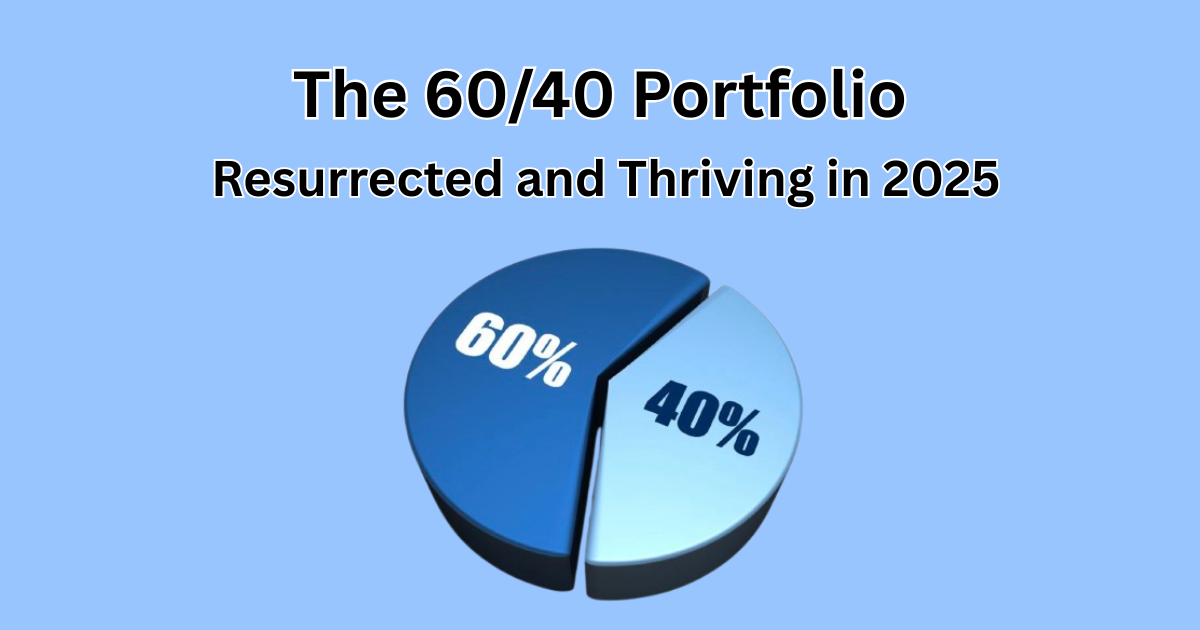

Welcome to The Profit Zone 👋
Where thousands of millionaires, CEO’s and high-performing entrepreneurs read the #1 financial newsletter on the web.


👉 Oil Prices Are On The Rise: Find Out What This Means For You 🛢
👉 Dividend ETFs vs. Individual Stocks: A Young Investor’s Dilemma 🤔
👉 40% Gain YTD: Our 2025 Stock Picks Are Crushing It. Join Our Community To Find Out What We’re Buying 📈
👉 What Type of Content Do You Want? Leave Your Thoughts In The Poll Below 👇


“The whole secret to winning big in the stock market is not to be right all the time, but to lose the least amount possible when you’re wrong.”


Oil Prices Are On The Rise 📈

Iran’s retaliation on Israel’s military strikes on June 13th triggered global market turmoil, with fears of an all out war in the Middle East which could disrupt oil supplies and further fuel inflation.
Brent crude and West Texas oil prices surged by 7% to over $74 and nearly $73/barrel, marking the years largest daily gain.
The S&P 500 fell 1.1%, marking its worst day in a month, ending a two-week gain streak with a 0.4% weekly loss. Despite that, energy and defence stocks saw gains.
As with any global conflict, the price of Gold rose, and the 10-year U.S. Treasury yield rose as investors delayed their expectations for rate cuts this year.
Iran is a major oil producer exported mainly to China and controls the Strait of Hormuz whereby 1/3 of the global seaborne oil passes.
If this were to get blocked, it could cause oil prices to 2x.
I’m not saying that oil is a good investment right now, but it may be worth looking into should this conflict continue.

Learn AI in 5 minutes a day
This is the easiest way for a busy person wanting to learn AI in as little time as possible:
Sign up for The Rundown AI newsletter
They send you 5-minute email updates on the latest AI news and how to use it
You learn how to become 2x more productive by leveraging AI


Dividend ETFs vs. Individual Stocks: A Young Investor’s Dilemma
As a young investor who might be eyeing passive income, you’ve likely wondered the following question:
Should I invest in dividend ETFs or hand-pick individual dividend stocks?
Both paths offer unique advantages and challenges along your investing journey.
Let’s break it down to help you decide which one suits you best.
Dividend ETFs: Diversified Simplicity
Dividend exchange-traded funds (ETFs) pool multiple dividend-paying stocks into a single investment, offering instant diversification.
Think of a salad…
When you buy the salad, you might get cucumbers, tomatoes, olives, feta cheese, and maybe some chicken. You’re buying the salad, but inside is everything that makes up said salad.
For young investors, this is a very attractive option.
Diversified portfolios reduce risk by spreading your exposure across multiple industries.
ETFs like the Vanguard Dividend Appreciation ETF $VIG ( ▲ 1.08% ) or Schwab U.S. Dividend Equity ETF $SCHD ( ▲ 1.43% ) focus on companies with consistent dividend growth, providing stability AND diversification.
The best of both worlds.
Here are the Pros and Cons.
Pros:
Low Effort: ETFs require minimal research compared to analyzing individual companies. All you have to do is buy, hold, and let the fund managers handle the rest of the work. Easy and simple.
Lower Risk: Diversification mitigates the impact of a single company’s failure. Dividend ETFs are often less volatile than individual stocks so you can sleep well at night.
Cost-Effective: Many ETFs boast low expense ratios, some as low as 0.02%, keeping fees minimal and allowing you to keep more money in your pockets.
Cons:
Limited Control: You can’t pick specific companies. As a result, the ETF may include underperformers that you otherwise would never hold as an individual stock.
Lower Yield Potential: Some ETFs blend high and low yielding stocks, often resulting in moderate dividends than you might get from an individual stock. For example SCHD yields ~3.8% as of June 10, 2025, but there are plenty of individual companies paying much higher yields. A friendly reminder: never invest in a company based on yield alone.
Fees: Even small expense ratios chip away at returns over decades. Just 0.02% over a period of 30 years can be quite significant, depending on how much you have invested.
Individual Dividend Stocks: High Effort But Higher Reward
Hand-picking dividend stocks means selecting companies like Target $TGT ( ▲ 1.07% ) or Realty Income $O ( ▼ 0.67% ) for their reliable payouts. These stocks are part of whats called the “Dividend Aristocrats” list.
The stock picking approach appeals to investors seeking higher yields and more control. They come with their share of Pros and Cons as well.
Pros:
Higher Yields: Stocks like Chevron $CVX ( ▲ 1.97% ) can offer yields near 5%, outpacing many dividend focused ETFs as mentioned above.
Customization: You can tailor your portfolio to align with your goals, avoiding companies you may not want to invest in. You can also buy stocks with staggered dividend payment months so you can ensure you’re earning consistent cash flow.
Growth Potential: Dividend aristocrats (companies with 25+ years of dividend increases) typically deliver strong capital appreciation alongside the cash flow they provide, which is a great wealth building combo.
Cons:
Higher Risk: If a company in your portfolio cuts their dividend or files for bankruptcy, it will hit you harder than if it were to happen in an ETF. For example, one of the most notable and recent dividend cuts was BCE Inc. $BCE ( ▲ 0.17% ) who cut its dividend from $3.99/share to $1.75/share on an annualized basis, marking the first time the company has cut its dividend in 17 years. This could be devastating as an investor if the bulk of your cash flow comes from this stock.
Time-Intensive: Researching financial statements, payout ratios, and industry trends can take a lot of time, especially if you own a handful of individual stocks.
Concentration Risk: Owning just a few stocks increases your vulnerability to sector-specific downturns.
Which Path Suits You?
If you’re a younger investor, the choice depends on time, risk tolerance, and your own personal goals.
If you’re busy and risk-averse, dividend ETFs offer a hands-off way to build passive income with lower volatility, despite the management fee you’ll pay to be “hands-off”.
A $10,000 investment in SCHD at 3.8% will pay you $380 annually, money that can then be reinvested for more growth.
On the flip side, if you’re willing to research and accept the higher risk, individual stocks can deliver larger payouts and more personalization.
A $10,000 portfolio of higher-yielding stocks at 5% will pay you $500 yearly, but requires more work than the ETF. There’s a trade off for every choice.
My Pro Tip:
Blend both strategies! Why be a one-trick pony?
Use ETFs as your foundation and then allocate a smaller portion to carefully chosen stocks for higher yield and growth.
Always make sure you’re checking payout ratios (below 60% is ideal) to ensure long term dividend sustainability.
Need more help analyzing dividend stocks? See below.
Having Trouble Analyzing Dividend Stocks? Try Our FREE Dividend Stock Checklist.
Final Thoughts
Whether you choose dividend ETFs or individual stocks, start small, reinvest your dividends, and stay consistent.
Passive income builds over time and your 20s-30s are the perfect time to start the snowball.
See you in the next one!




What topic do you want me to cover most?


Join The Profit Zone Premium to supercharge your investment strategy and stay ahead of the market.

Beating the S&P 500 by 40%+ over the last year doesn’t just happen by chance.
Our premium newsletter delivers exclusive insights and tools to help you build wealth on autopilot.
Gain access to:
Market-Beating Performance: Our 2025 stock picks are outperforming the S&P 500 YTD by a WIDE margin 📈
Real-Time Trade Alerts: Get instant access to my buy and sell recommendations as they happen. All my trades are posted in the Community as soon as I make them 🚨
Deep-Dive Stock Analysis: Receive concise one-pager reports on undervalued stocks with high potential 📔
I recently sent Google to my community to buy at $150/share (currently trading at $176). That’s a 17% gain in 3 months.
Don’t believe me? Here’s what one of our members had to say. He made $500 and paid for more than 2 years of being in this Community.
Or you can keep trying to guess what stocks are undervalued.
I provide the framework. It’s yours when you click here.


Disclaimer: The publisher does not guarantee the accuracy or completeness of the information provided in this page. All statements and expressions herein are the sole opinion of the author or paid advertiser.
Dividend Domination Inc. is a publisher of financial information, not an investment advisor. We do not provide personalized or individualized investment advice or information that is tailored to the needs of any particular recipient.
THE INFORMATION CONTAINED ON THIS WEBSITE IS NOT AND SHOULD NOT BE CONSTRUED AS INVESTMENT ADVICE, AND DOES NOT PURPORT TO BE AND DOES NOT EXPRESS ANY OPINION AS TO THE PRICE AT WHICH THE SECURITIES OF ANY COMPANY MAY TRADE AT ANY TIME. THE INFORMATION AND OPINIONS PROVIDED HEREIN SHOULD NOT BE TAKEN AS SPECIFIC ADVICE ON THE MERITS OF ANY INVESTMENT DECISION. INVESTORS SHOULD MAKE THEIR OWN INVESTIGATION AND DECISIONS REGARDING THE PROSPECTS OF ANY COMPANY DISCUSSED HEREIN BASED ON SUCH INVESTORS’ OWN REVIEW OF PUBLICLY AVAILABLE INFORMATION AND SHOULD NOT RELY ON THE INFORMATION CONTAINED HEREIN.
Any projections, market outlooks or estimates herein are forward-looking statements and are inherently unreliable. They are based upon certain assumptions and should not be construed to be indicative of the actual events that will occur. Other events that were not taken into account may occur and may significantly affect the returns or performance of the securities discussed herein. The information provided herein is based on matters as they exist as of the date of preparation and not as of any future date, and the publisher undertakes no obligation to correct, update or revise the information in this document or to otherwise provide any additional material.
The publisher, its affiliates, and clients of the publisher or its affiliates may currently have long or short positions in the securities of the companies mentioned herein or may have such a position in the future (and therefore may profit from fluctuations in the trading price of the securities). To the extent such persons do have such positions, there is no guarantee that such persons will maintain such positions.
Neither the publisher nor any of its affiliates accept any liability whatsoever for any direct or consequential loss howsoever arising, directly or indirectly, from any use of the information contained herein.
By using the Site or any affiliated social media account, you are indicating your consent and agreement to this disclaimer and our terms of use. Unauthorized reproduction of this newsletter or its contents by photocopy, facsimile or any other means is illegal and punishable by law.





